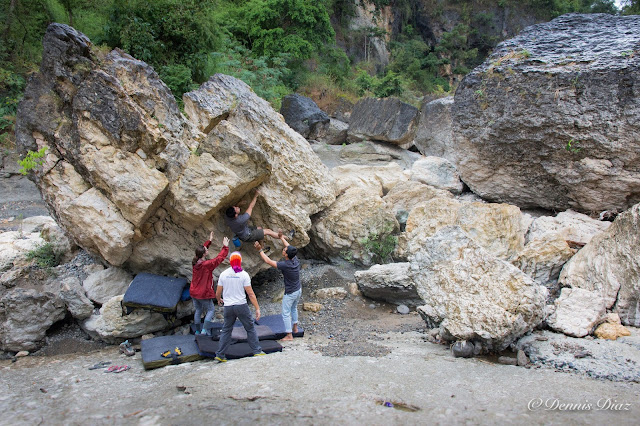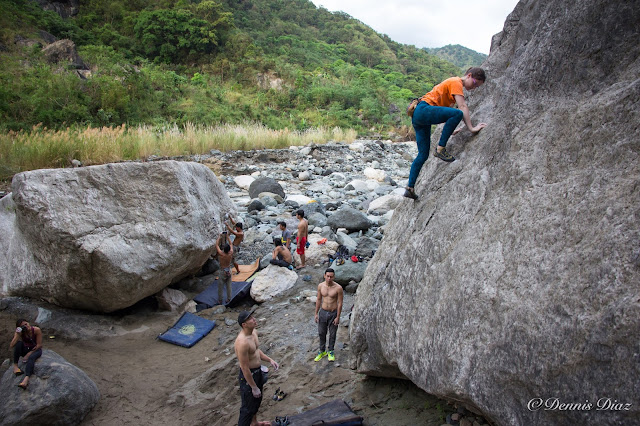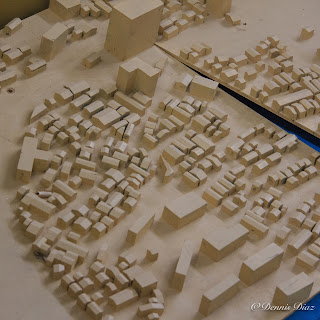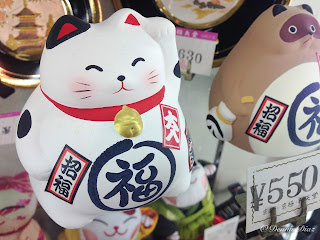Among
the archaic weapons that laced the epic duels of feudal Japan none epitomized
the greatest contest more than the katana versus the jo or the short wooden
stick. The story of the meeting between the sword wielding Miyamoto Musashi and
the jo handler Mus Gonnosuke still etch vivid scenes that remain
in my mind. Musashi lost that duel. The elegant, hard-edged, and sharp katana
was defeated by the simplicity and balance of the jo.
Gonnosuke still etch vivid scenes that remain
in my mind. Musashi lost that duel. The elegant, hard-edged, and sharp katana
was defeated by the simplicity and balance of the jo.
Wielding bokken to practice movement based on the sword
I
once questioned the outcome of that duel. How can a weapon made of steel with
razor sharp edge be defeated by a blunt wooden stick? What are the strong
points of each weapon and what disadvantage can one have against the other? Which
one would I actually choose if I were to be in a duel set in feudal Japan?
It
is hard to choose between the katana and the jo. Both weapons possess elegance
and versatility. The manner by which they are wielded are different yet in my
study of Aikido, a martial art grounded in the movement of both these weapons,
I’ve come to learn certain similarities. Still, they do posses certain
advantages and disadvantages over the other.
The
katana is made of steel, forged and formed by master blacksmiths. It’s made of
a material most definitely stronger than wood and Japanese masterful
craftsmanship makes it no ordinary sword. It is made to perfection. It is light
and can be made to deflect and cut at the same time. Its razor sharp edge can
cut through wood and human bone and its point is just as lethal if not more. A
learned swordsman wielding a katana is a deadly force. Still, it is a one-sided
weapon; it has one sharp edge, one sharp point, and usually rests on the left
hip so that the right hand will be the one to control it with the left hand
used for delivering power from the very end of the hilt.
The
jo on the other hand is a considerably longer weapon thus having advantage over
reach. Its well-balanced construction allows both ends to be made to thrust and
deliver powerful blunt edge strikes that can quite easily crush or break bones.
The power of the jo also lies on its versatility to be used symmetrically. That is, it has no preference from which side
of the body it’s going to come from, which hand to use for control, and which
hand to use for power. A master of the jo can hold the entire length of the
weapon at any point giving him a flexibility of attacks and defense that
becomes harder to anticipate.
A
martial art based on the use of sword and jo techniques; Aikido emphasizes
deflection or redirection rather than blocking or stopping movement. Needless
to say there is a way to deflect the cutting edge of a sword. A jo is useless
to block a katana but it can deflect it. With the greatest advantage of the
katana, that is its edge, nullified by skillful deflection, the jo gains the
upper advantage. It’s not hard now to imagine why Musashi lost to Gonnosuke.
That
said, would I choose the jo? No. I would still choose the katana. It would be
for the reason that it’s not an ordinary weapon. The amount of craftsmanship
that goes into its making and the mere fact that it remains sheathed until
there is no other option but to draw it out makes it elegant and a civilized
weapon. The question about winning the duel still looms. There is a bigger
chance of losing if I choose the katana over the jo but I’m not saying I’m ok
with defeat. Perhaps I’m saying I’m willing enough to struggle against the
odds. I’m saying, yes give me that beating but I won’t give up. I choose the
katana, win or lose.








































































































































































